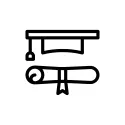Agile Estimation Techniques to Try With your Team
Agile software development

Estimating effort and delivering accurate timelines is a constant challenge in Agile software development. Agile estimation techniques provide a structured approach to help teams make informed decisions and create realistic project plans. In this blog, we will explore some popular Agile estimation techniques that you can try with your team to improve estimation accuracy and enhance collaboration.
1. Planning Poker:
Planning Poker is a widely used Agile estimation technique that involves team members assigning relative effort points to user stories. Each team member receives a deck of cards, typically featuring numbers from the Fibonacci sequence or other numeric scales. The Product Owner or Scrum Master presents a user story, and each team member selects a card representing their estimate. The team discusses their estimates, aiming for consensus. In case of significant discrepancies, the team engages in further discussion to align their understanding. Planning Poker encourages collaboration, facilitates discussion, and ensures that everyone’s perspective is considered.
2. T-Shirt Sizes:
T-Shirt Sizes estimation technique is a simple and intuitive approach that uses relative sizing. Each user story is assigned a size, represented by t-shirt sizes like XS, S, M, L, or XL. The team compares user stories against each other and collectively determines their relative sizes. T-Shirt Sizes estimation is quick and easy, providing a high-level overview of effort without going into detailed complexity analysis. This technique is particularly useful during initial high-level estimation or backlog grooming sessions.

3. Bucket System:
The Bucket System estimation technique involves categorizing user stories into predefined buckets based on their effort or complexity. For example, buckets can be labeled as “Small,” “Medium,” “Large,” or “Extra Large.” The team collectively determines which bucket each user story belongs to, based on their understanding of the work involved. This technique allows teams to quickly group user stories into different levels of effort, enabling high-level planning and prioritization.
4. Dot Voting:
Dot Voting is a collaborative Agile estimation technique that helps teams reach a consensus on effort or priority. The team is presented with a list of user stories or tasks, and each team member is given a certain number of dots or votes. Team members independently distribute their votes among the items, indicating their perceived effort or priority. The team then visually identifies the items with the highest number of votes, indicating a shared understanding. Dot Voting encourages active participation, ensures equal input from all team members, and facilitates decision-making.

5. Comparative Estimation:
Comparative Estimation, also known as the “Affinity Estimation” technique, involves comparing user stories or tasks against each other. The team takes a few representative user stories and establishes a baseline, defining their effort or complexity as a reference point. Then, the team compares other user stories against the baseline, assigning relative effort points based on how they relate to the reference stories. This technique helps in quickly estimating the effort required for new user stories by leveraging past experience and existing knowledge.
6. Conclusion:
Agile estimation techniques play a crucial role in enabling effective planning, prioritization, and decision-making in software development projects. By experimenting with different estimation techniques like Planning Poker, T-Shirt Sizes, Bucket System, Dot Voting, and Comparative Estimation, your team can find the approach that best fits their needs. These techniques promote collaboration, foster discussions, and enhance the accuracy of estimations. Remember that estimation is an iterative process, and it’s essential to revisit and refine estimates as the team gains more insights and progress in the project. Embrace these Agile estimation techniques to improve estimation accuracy, enhance team collaboration, and deliver successful projects.







 Food & Beverage
Food & Beverage
 Sports
Sports
 News
News
 Manufacturing
Manufacturing
 Insurance
Insurance
 Healthcare
Healthcare
 Real Estate
Real Estate
 E-Commerce
E-Commerce
 Luxury
Luxury
 Fashion & Retail
Fashion & Retail
 Education
Education
 Tourism
Tourism
 Automobile
Automobile
 Media & Entertainment
Media & Entertainment











































